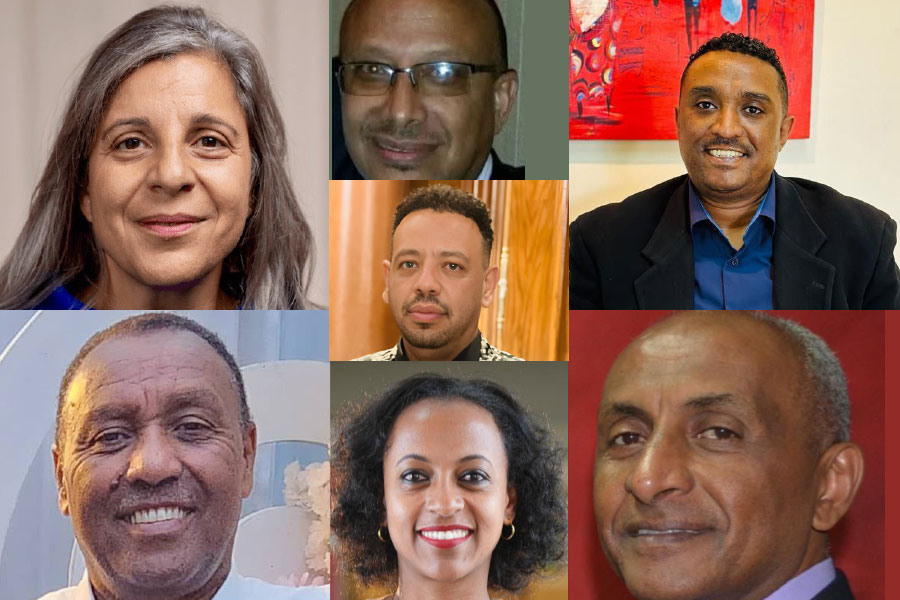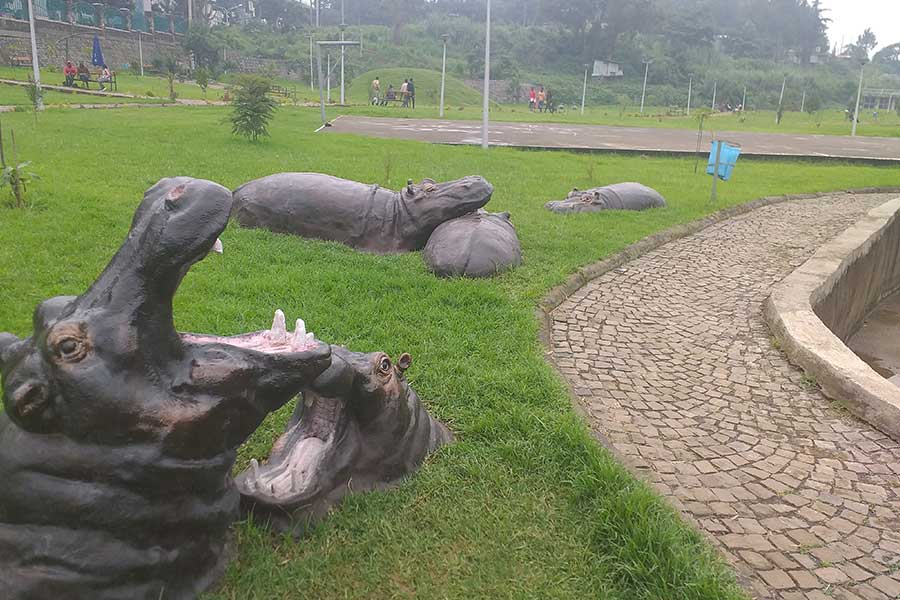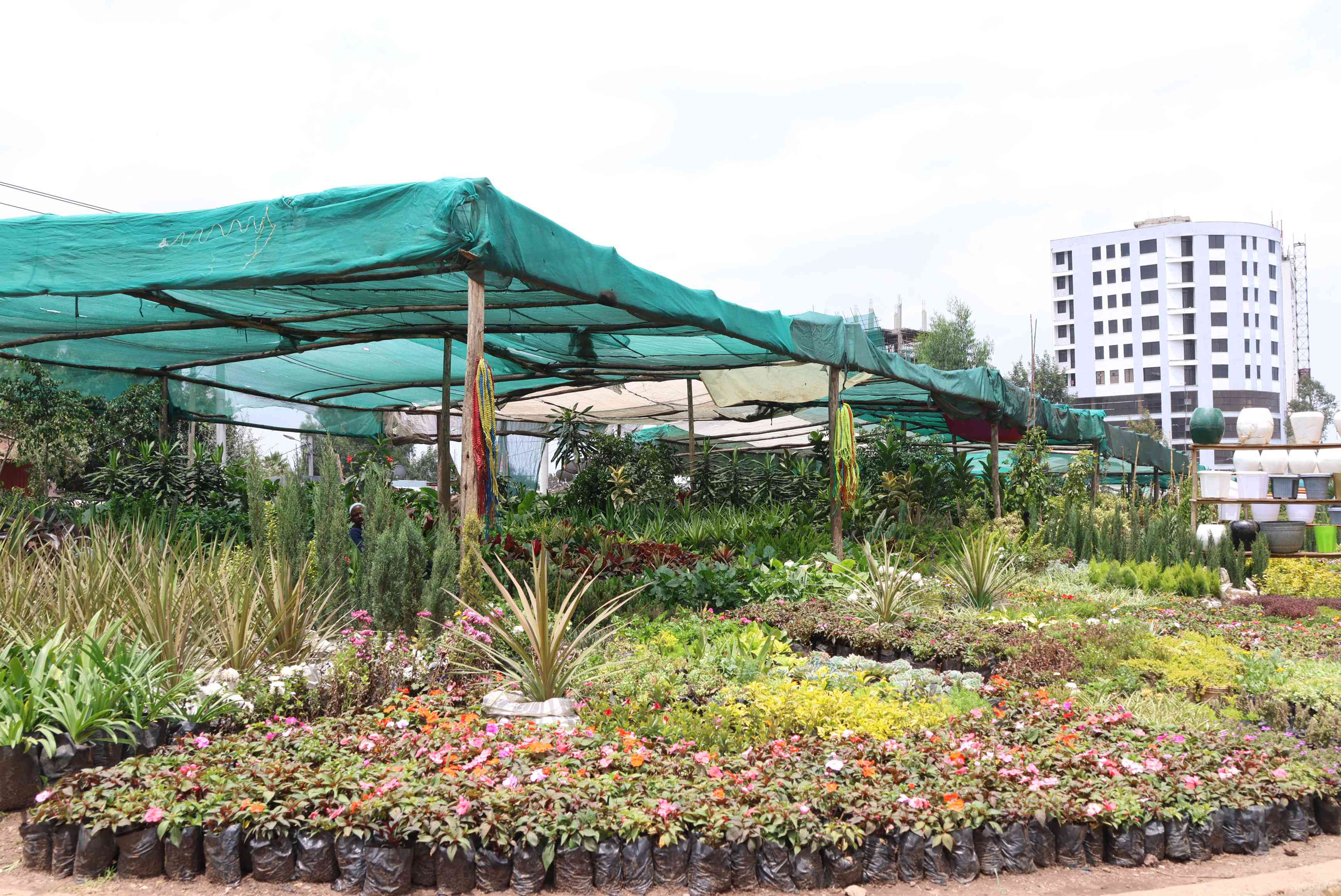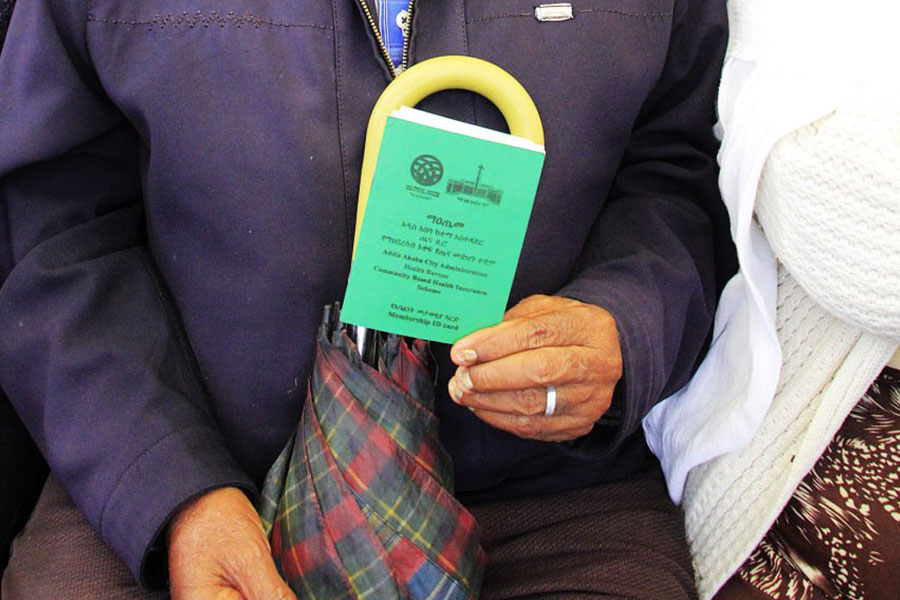
Agenda | Mar 30,2024
Aug 8 , 2020.
A familiar sight these days is high government officials - the very important people - hunched over muddy ground. Parliamentarians, ministers and diplomats have followed the end of meetings with visits to wet green fields. Sleeves are rolled up, and stern looks are donned to shovel mud and plant seedlings.
Even dignitaries are not spared. Prime Minister Abiy Ahmed (PhD) dragged Mohamed Hamdan Daglo (Lt. Gen.), deputy chairman of the Sovereignty Council of Sudan, the country’s transitional government, to the top of a hill following a visit to ongoing construction projects in Addis Abeba. Side by side, under a sunny sky, they upturned some dirt and planted a young tree. The Prime Minister also did the same with President Ismail Omar Guelleh in Djibouti and in the regional states he visits in Ethiopia.
The Green Legacy Initiative, which plans for billions of trees to be planted across Ethiopia, is not something the Prime Minister takes lightly. His preoccupation with plantings, the scale of the campaigns and the media attention the initiative has received have become the subject of endless puns and criticism.
No doubt, the countless photo ops being dedicated to the campaign may border on irritation. Mass plantings, some of which fall on weekdays, have inconvenienced citizens unlucky enough to visit government offices on certain days. The innocuous initiative of planting trees has also served as a distraction from the formidable economic and political challenges the country is facing.
But, on its own, the initiative is of significant socioeconomic value. From mitigating droughts and flood control to the preservation of soil fertility to limiting CO2 emissions, improving forest coverage across Ethiopia is crucial. It is instrumental in avoiding generational environmental problems that are bound to worsen as populations increase and the demand for energy resources rise.
In its conception, the initiative shares similarities with the Climate-Resilient Green Economy, which was launched in 2011 - a much broader plan aimed at mitigating the environmental impacts of economic development. Green Legacy emphasises that initiative’s aim of re-establishing and protecting Ethiopia’s forest ecosystems with the plan of addressing environmental degradation through carbon sequestration, preservation of wildlife and biodiversity and mitigation of soil infertility.
Planting five billion trees this year, for a total of four times that by 2024, it is not an insensible way of going about it. It is also a ludicrously ambitious plan compared to other mass planting campaigns that have been proposed. The United Kingdom's Labour Party, for instance, pledged to plant two billion trees by 2040 if it won the country's general election last year.
The use of planting trees to combat climate change cannot be adequate on its own. The burning of fossil fuels is still the most fundamental challenge that is causing environmental problems. It would indeed require a more comprehensive approach than the Green Economy initiative had called for.
Still, Green Legacy, like similar initiatives in other parts of the world, is commendable in its scaled-up and sustained efforts to create awareness, change behaviours and improve the coverage of forest lands that declined as Ethiopia's population grew.
Planting trees is nonetheless the easy part.
Growing them is another story. Survival rates are often low. Mass-planting campaigns in several countries have had abysmal success rates. Take Sri Lanka, which attempted the planting of mangrove trees, which are popular for sequestering large amounts of carbon dioxide. In more than half of the sites where they were planted, none survived. Only in 13pc of the sites did over half of the seedlings make it to maturity. Similar mass plantings were attempted in Thailand and the Philippines with just a fifth of the seedlings surviving.
In Ethiopia too, tree planting initiatives between the early 1970s and 1990s, including programmes supported by the United Nations Development Programme (UNDP), have resulted in a less than 20pc survival rate, according to Badege Bishaw’s (PhD), in his study titled, “Deforestation and Land Degradation on the Ethiopian Highlands: A Strategy for Physical Recovery.”
The reason for this is obvious. Ensuring that the right type of seedlings are planted in the soil composition, altitude and weather conditions suitable for them is near impossible when it is done at large scales. Follow-up care, which required more efforts than merely shoveling some dirt and planting a seedling, is also resource-intensive.
It is only the likes of eucalyptus trees, which are invasive in some environments, that have a high success rate under these circumstances. They are resourceful species that do not require much care once they are planted. But, as the Green Legacy insists rightly, the plan is to diversify away from such species that are detrimental to the environment and toward those that would be helpful in addressing environmental degradation but are much harder to grow.
Undeniably, even a fraction of 20 billion trees, if indeed that many are planted, over four years is a significant amount. But to leverage this initiative, there is a need to also focus on conservation efforts that have been known to be much more effective. This has been obvious as Europe, defying the global trend, experienced what has been described as a “forest boom,” adding a forest coverage the size of Portugal in the quarter of a century since 1990.
But Europe is a rich sub-continent that could put in place sophisticated conservation practices to protect forests. This is not to mention the fruits of intensive agriculture that improved yields per hectare, leading to reduced demand for more farmland, and one of the slowest population growth rates of any region in the world. Many of these are luxuries that would take Ethiopia several decades to realise.
A better strategy would be to look at countries that have put in place innovative conservation methods, many of which have focused on addressing the economic incentives for deforestation. People cut down trees, because they either need the land for farming or the wood for fuel and construction. The more rural the area and the likelier that the people find themselves in the lower-income group, the higher the probability that they cut down trees. It is a matter of survival.
There are initiatives across the world to involve communities in the management and governance of forests in their area to counter these problems. It mainly consists of giving local people cash payments in return for looking after forests.
It is essentially allowing local communities a sense of agency and ownership of the forests in their vicinity. The woods gain a greater degree of importance in their eyes when they are made to benefit from its conservation directly. Policing and berating them for contributing to the abstract notion of climate change when they cut down trees is a much less effective tactic.
In Kenya, within half a decade, some 127ha of forest cover was conserved and restored through cash payment initiatives, according to the Global Mangrove Alliance. In Indonesia, conditional cash transfers to communities dependent on forests reduced deforestation by 30pc within those areas.
The idea of involving communities in forest management is not unheard of in Ethiopia. About 1.4 million hectares of forest land, or 10pc of the whole, is under some sort of community-based management regime. Although this has no guarantee of financial returns for those that are involved, it is upon such foundations that conservation can be expanded. Initiatives such as the Green Legacy could be complimented with such an effort.
PUBLISHED ON
Aug 08,2020 [ VOL
21 , NO
1058]

Agenda | Mar 30,2024

Radar | Aug 01,2020

Exclusive Interviews | Apr 19,2025

In-Picture | Oct 12,2024

Advertorials | May 30,2025

Viewpoints | Aug 13,2022

My Opinion | Mar 16,2024

Radar | Sep 14,2019

Commentaries | Nov 26,2022

Fortune News | Jul 27,2025

Photo Gallery | 177001 Views | May 06,2019

Photo Gallery | 167217 Views | Apr 26,2019

Photo Gallery | 157806 Views | Oct 06,2021

My Opinion | 136946 Views | Aug 14,2021

Dec 22 , 2024 . By TIZITA SHEWAFERAW
Charged with transforming colossal state-owned enterprises into modern and competitiv...

Aug 18 , 2024 . By AKSAH ITALO
Although predictable Yonas Zerihun's job in the ride-hailing service is not immune to...

Jul 28 , 2024 . By TIZITA SHEWAFERAW
Unhabitual, perhaps too many, Samuel Gebreyohannes, 38, used to occasionally enjoy a couple of beers at breakfast. However, he recently swit...

Jul 13 , 2024 . By AKSAH ITALO
Investors who rely on tractors, trucks, and field vehicles for commuting, transporting commodities, and f...

Oct 18 , 2025 . By NAHOM AYELE
In a sweeping reform that upends nearly a decade of uniform health insurance contribu...

A bill that could transform the nutritional state sits in a limbo, even as the countr...

Oct 18 , 2025 . By SURAFEL MULUGETA
A long-planned directive to curb carbon emissions from fossil-fuel-powered vehicles h...

Oct 18 , 2025 . By BEZAWIT HULUAGER
Transaction advisors working with companies that hold over a quarter of a billion Bir...